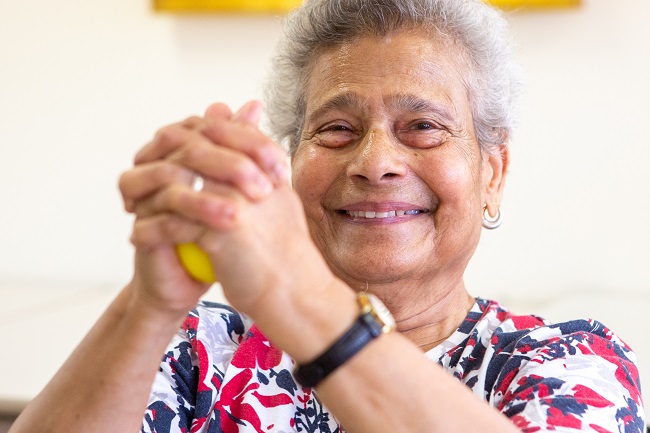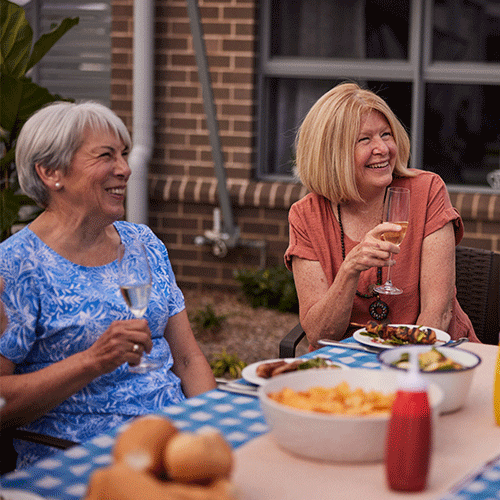Exercising and osteoarthritis: everything you need to know
Regular exercise is an important way to help manage osteoarthritis and to keep yourself fit.

According to Arthritis Australia four million Australians live with arthritis and that number is expected to grow to 5.4 million by 2030.
Arthritis is a group of conditions affecting the joints. It can be a very painful condition and is the second most common cause of early retirement due to ill health.
What is osteoarthritis?
Osteoarthritis (OA) is the most common form and affects the whole joint including bone, cartilage, ligaments and muscles. Arthritis Australia says although osteoarthritis is often described as ‘wear and tear’, it is now believed to be the result of a joint working extra hard to repair itself.
Osteoarthritis can affect any joint but occurs most often in the knees, hips, finger joints and big toe, and it can develop at any age but tends to be more common in people aged over 40 years or those who have had joint injuries.
How can you help manage osteoarthritis?
Regular exercise is an important way to help manage osteoarthritis and to keep yourself fit.
But if you’ve developed osteoarthritis, some of the exercises you used to do might be too painful or no longer suitable. It is likely you’ll have to modify your routine to stay active.
Talk to your doctor
Before you embark on any new exercise regime you should talk to your doctor and other medical professionals such as a physiotherapist or exercise physiologist, to make sure you get a program best suited to your condition and general health.
Find out more about osteoporosis.
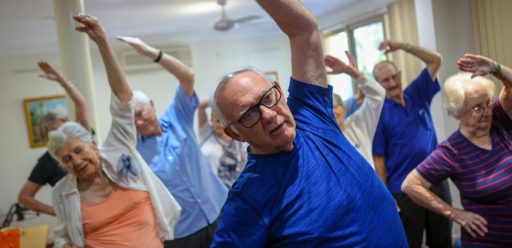
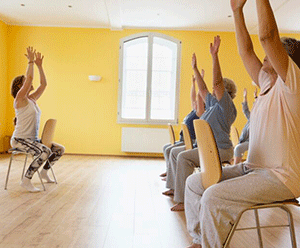
Try low-impact exercise
Experts recommend aiming for 30 minutes of exercise a day and choosing low-impact exercises. Some examples are walking, exercising in water, strength training, cycling, yoga and Pilates.
Arthritis Australia says it’s important to get a mix of exercises that include flexibility, muscle strengthening and fitness.
1. Flexibility
Flexibility is important to maintaining or improving the mobility of your joints and muscles.
Queensland Health’s Ageing with Vitality Guide says stretching is a great way to keep your body flexible and limber.
The guide gives detailed descriptions of stretching exercises you can do at home, including for your shoulders, upper arms, upper body, neck, lower back, thighs and calf.
Yoga and Pilates are also great ways of improving your flexibility. According to a Medical News Today article by Hannah Nichols, yoga is low-impact and safe for people when a well-trained instructor is guiding the practice. The article described what yoga is, the different types and risks and side-effects.
Better Health Channel describes Pilates (or the Pilates method) as a series of about 500 exercises inspired by calisthenics, yoga and ballet. Pilates lengthens and stretches all the major muscle groups in the body in a balanced fashion. Not only does it help with flexibility, it is also an effective way of strengthening your body and improving balance.
2. Strengthening
Building and maintaining strong muscles helps to support and take pressure off sore joints, strengthen bones and improve balance.
WebMD says muscle strengthening can come from lifting hand weights, using flexible tubing, even lifting a filled one-litre water bottle.
WebMD's fitness expert Richard Weil says to start a hand-weight program, use weights that you can lift 12 to 15 times with good form. He recommends starting with some simple strengthening exercises and suggests doing two or three sets of eight to 12 repetitions each.
Biceps curls: Start with elbows bent at the sides. Keeping your upper arm at your side, bring your hand weight up to your shoulder. Lower to original position and repeat with opposite arm. Continue to alternate between sides.
Triceps extensions: Use both hands to hold weight overhead. Keeping your elbows pointed upward, lower the weight behind your head. (Make sure you don't hit the back of your neck.) Raise weight overhead again. Return and repeat.
Side lateral raises: With arms down at your sides, raise arms (slightly bent) to shoulder height. Lower and repeat.
Wall push-up: This exercise is great for people who are not able to do a regular push-up. Stand with feet about 30cm from a wall. Place hands a little wider than shoulders. Lower your chest to the wall, then push back to the starting position.
3. Fitness
Better Health Channel says exercise that gets you moving and increases your heart rate will help improve the health of your heart and lungs. It can also help with endurance, weight loss and prevention of other health problems, such as diabetes. This type of exercise is also called aerobic exercise, cardiovascular exercise or ‘cardio’.
Suggestions include:
- swimming or water exercise classes
- tai chi
- walking or Nordic walking (walking with Nordic poles)
- chair exercises
- low-impact aerobics
- strength training
- dancing.
Once you’ve decided on a program that suits you, WebMD recommends starting your workout slowly, with a warm-up. It even suggests a warm bath or heat packs before you exercise.
Warm-up exercises can include side bends, shoulder shrugs, arm circles and torso rotations.
Movement itself can warm up muscles so if you're getting ready to swim or walk, your warm-up can be a gentle swim or walk.
Regular exercise is just one of the 10 ways Arthritis Australia outlines to help you live with arthritis. If you want to learn more about the other nine, you can read their booklet 10 steps for living well with arthritis.
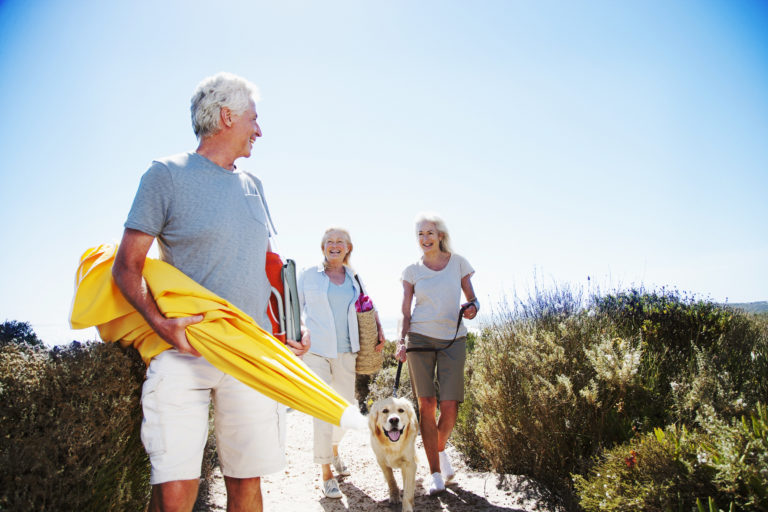
Keep healthy and active with IRT
At IRT, we’ve been helping older Australians live their best lives for more than 50 years. We offer retirement living, residential aged care and home care services in various locations across NSW, ACT and Qld. We believe it's our values as a community-owned provider that help us to be the best at what we do.
Find out moreYou may also like
10 benefits of exercise for mental health
We all know that exercise is important for our physical wellbeing, but have you considered the benefits of exercise for your mental health?
How to choose where to live in retirement
Retirement is something we are all working towards but there are plenty of things to consider before getting there – including where to live.

